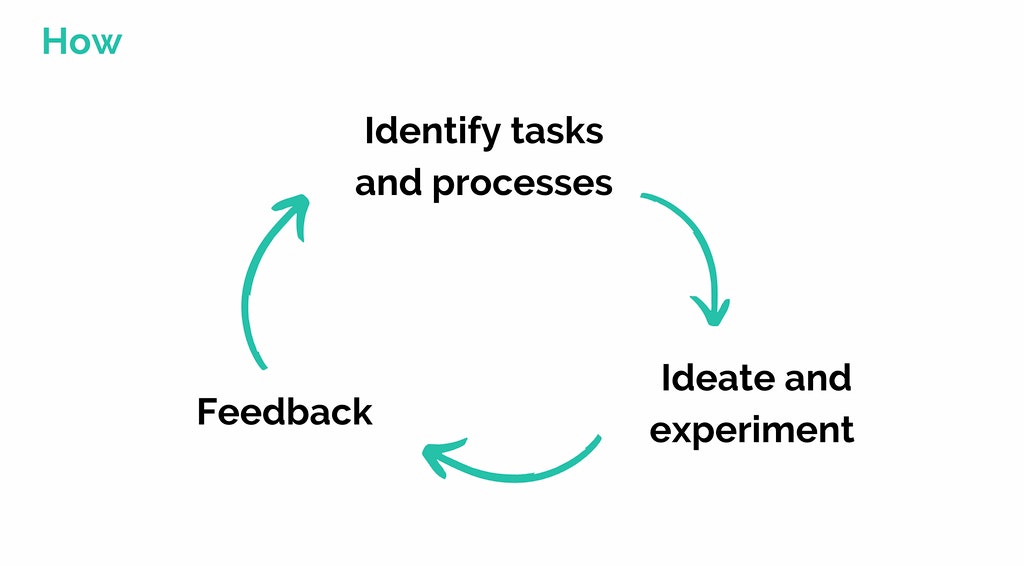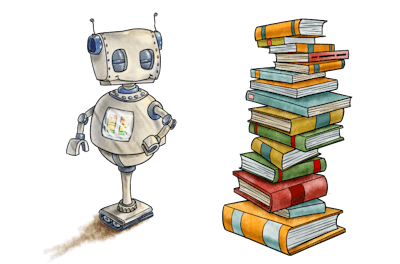Like many businesses, we're trying to understand GenerativeAI, what it is, what it can do, how it can improve our offering, and where it could be a threat and introduce new risks. I find the sheer breadth of GenerativeAI challenging! In exploring all the various use cases it could assist with and the best way to identify a few where we best invest our time. There's also plenty of hype about GenerativeAI, and it's easy to get caught up in this and believe it can solve all the problems. Who knows, maybe one day it will. My instincts are to keep an open mind and experiment with it on practical day-to-day tasks.
Since May last year, a group of Yarnoers interested in AI has researched the space to understand how AI and GenerativeAI, in particular, are being developed and implemented in different industries and businesses. More recently, we've talked about Yarno-specific use cases and begun testing writing content and creating images, videos, and voiceovers using various large language models such as ChatGPT.

Being a small business, we don't have an R&D team. Experiments are run on the side by various Yarnoers, and this has worked fine until now. However, the breadth and speed of change of GenerativeAI is forcing us to reconsider how we run experiments to upskill and identify opportunities while not deprioritising everything else we're working on.
Recently I shared a short presentation with the Yarno team on this topic since it's been on my mind for a while. Mark and I wanted to communicate that, like it or not, GenerativeAI is here and will change the workplace. Precisely what does that change look like? I don't think anyone can say. So we must invest time and effort to learn and experiment with the technology for the collective benefit of the team, our customers and the business.
Here are a few reasons why we need to experiment with GenerativeAI @ Yarno.
Increase resilience
The more knowledgeable we are about the technology and what it can do, the better placed we are to be competitive and to identify opportunities throughout the business. That’s true as a business and also as individuals since much of our resilience (and stressors) comes from our workplace environment.
We'll better understand what the technology can and can't do and how it can benefit our customers and us operationally. This will only happen if we're using the technology regularly and on day-to-day tasks that are important to us.
We should also have a better idea of the risks and downsides to the technology. To producing offensive and inaccurate content, to bias, copyright and ethical issues.
Differentiate and amplify
We can combine our skills, experience and data with GenerativeAI, to understand how we differentiate in an environment where every business will use this technology. To explore how we continue bringing our Yarno personality and touch to our work.
I really like the word amplify. I saw it in an HBR article that suggested replacing the word automation, which can feel cold and robotic, with amplify, which encourages us to extend what we're already doing. It's a more positive framing and a counterweight to the element of fear, which is very real.
Drive the change
Ultimately, we want to drive the change rather than be driven by it. Ask how do we want AI to affect work? Rather than how will it affect work? The change is happening quickly as the technology matures and use cases evolve. So, time is at a premium.
We’re going to start at the beginning (always a good place to start!) by identifying areas of highest need at Yarno. We’ll aim to identify overly manual tasks and processes that could be more efficient and where time and effort could be reduced for a similar outcome.
Next we’ll ideate and experiment with different ways technology can help, and share feedback on what does and doesn’t work. These experiments will be time-boxed and have clear scopes. Then we’ll evaluate and iterate, and start the cycle again.

I hope that this lightweight approach empowers us to regularly test and learn and at a similar pace to the technology. To better understand how we can differentiate using technology that is expert at commoditising, and to better understand where it makes most sense for ‘human time’ to be invested.
In addition to experimenting with the technology in the business, we need to understand the legal obligations and liabilities of using third-party models with customer data.
We have three principles at Yarno, one of which is to play the long game. It's about making considered, deliberate decisions to benefit our stakeholders in the future. It's a principle I've thought about regularly since GenerativeAI's meteoric rise in popularity. In a young business and a startup at that, it's easy to change course quickly. We don't have the inertia and overheads that larger, established companies do. Yet just because we can change course quickly doesn't mean we should. So it's through that lens that I'm approaching experimentation with GenerativeAI.

